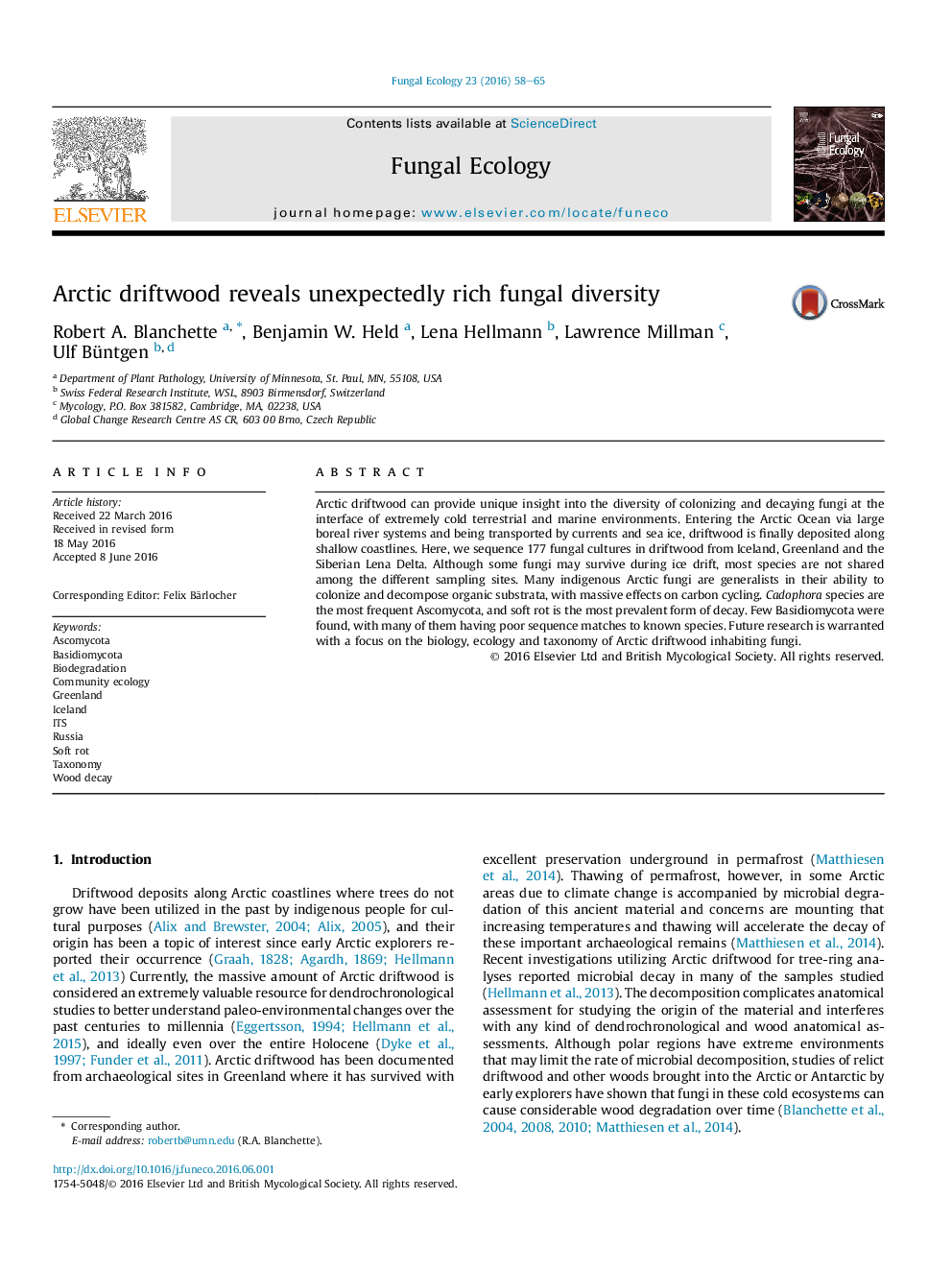| Article ID | Journal | Published Year | Pages | File Type |
|---|---|---|---|---|
| 8384310 | Fungal Ecology | 2016 | 8 Pages |
Abstract
Arctic driftwood can provide unique insight into the diversity of colonizing and decaying fungi at the interface of extremely cold terrestrial and marine environments. Entering the Arctic Ocean via large boreal river systems and being transported by currents and sea ice, driftwood is finally deposited along shallow coastlines. Here, we sequence 177 fungal cultures in driftwood from Iceland, Greenland and the Siberian Lena Delta. Although some fungi may survive during ice drift, most species are not shared among the different sampling sites. Many indigenous Arctic fungi are generalists in their ability to colonize and decompose organic substrata, with massive effects on carbon cycling. Cadophora species are the most frequent Ascomycota, and soft rot is the most prevalent form of decay. Few Basidiomycota were found, with many of them having poor sequence matches to known species. Future research is warranted with a focus on the biology, ecology and taxonomy of Arctic driftwood inhabiting fungi.
Keywords
Related Topics
Life Sciences
Agricultural and Biological Sciences
Ecology, Evolution, Behavior and Systematics
Authors
Robert A. Blanchette, Benjamin W. Held, Lena Hellmann, Lawrence Millman, Ulf Büntgen,
